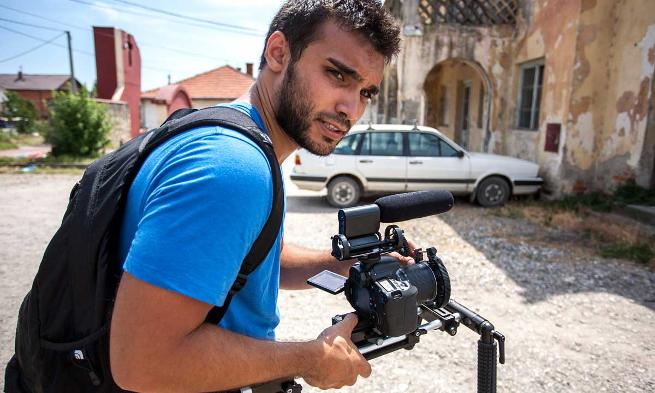Let your conscience be a guiding force
Arts and Culture
JMU students tell the story of post-war Bosnia
By Tyler McAvoy ('13)
Genocide and war are wounds that are cut deep, and never fully heal. Vestiges of the past still bring up vivid, horrible memories for those that survived it, and survivors on both sides of the conflict remain deeply divided, decades after the war is over.
In the town of Srebrenica in Bosnia and Herzegovina, remnants of genocide and war are all too apparent: Bullet holes riddle the walls of the buildings, shell casings and cut wrist-ties used to bind victims litter the floors and streets. Family homes destroyed by machines of war lay in crumpled piles, abandoned.
In only 11 days in July 1995, over 8,300 Bosnian Muslim men and young boys were slaughtered by Bosnian Serb forces in Srebrenica. The once thriving town that relied on its salt mines and spas became a grave for many. Those who still live around Srebrenica and lost friends and family during the massacre visit the sites they believe to be where their loved ones died.
One group in particular, the Mothers of Srebrenica, visit the killing fields on a bus tour every year to pay their respects to children they lost during the massacre.
This past July, the leader of the group, Hatidza Mehemodovic invited JMU students led by SMAD professor Shaun Wright, to accompany the Mothers of Srebrenica on their annual visit and document their story.
"It was really overwhelming," Wright said of the trip. "It was emotionally charged and emotionally taxing, but everyone wanted to go. It (the documentary) makes you wonder what it would be like to have to do this."
The 6-hour trip is the crux of the documentary film "A Mother's Walk," filmed and produced by JMU students that were on the trip. The film shows genocide's realities and its devastating impact, even 17 years later.
"Future Tense" delves into the lingering division between Bosnian and Serbian youth and the best way to mitigate the divisiveness.
The filmmakers interviewed the youth of Srebrenica to try and understand why the division still exists.
"To an outsider, the societal intricacies of this place are both invisible and incomprehensible," said Peter Jackson ('12) a SMAD major. "[The trip] culminated into a knowledge about how malleable social relations are, how instrumental social institutions like media and politics are in creating and perpetuating divisions, and how stagnating the legacy of war can be within a culture."
For the students working on the films, much of what they came across was hard to see. Alice Nelson ('13) a SMAD major, recounts a particular part of the trip when they stopped at a drainage site: "It was overwhelming when we went to site after site. You could actually pick up the bullet shells that were fired at the victims. People were picking them up and collecting them like candy. I'll definitely never forget those moments."
The students also attended a memorial service held for the victims of the Srebrenica genocide in the nearby town of Potocari. Thousands flock to the memorial in Potocari to pay their respects, and hundreds of identified bodies are given proper burials during the memorial.
"They're still finding victims," Wright said. "The scars of war are everywhere."
Unidentified bodies are found by the hundreds every year, and many people who lost family in the genocide, still don't know the location of the body.
"Mothers were crying over coffins holding fragments, partial body parts of their children and husbands," said Daniel Whelden ('13) a SMAD and Spanish major. "It was devastating but really eye-opening."
This year, 520 were buried during the service. Closure is hard to find for many of the survivors, as questions are still left unanswered from the chaos of the massacre.
"It brings history into the present to see that people are still being found," said Annie Long ('12) SMAD and Spanish major.
For Long, this was more than just a crash course in documentary film making: It was a trip to try and understand the people of Srebrenica and tell their story.
"I didn't want to go just to go or to be able to say that I did so. I didn't want to be a 'genocide tourist'." Long said. "Rather, I wanted to go because these women had a story that they wished for us to share."
The trip to Srebrenica was only a part of a longer trip that took the students through much of Bosnia, including Sarajevo, the country's capital. Here, the students visited with filmmakers, participated in documentary workshops and had the opportunity to talk with journalists that grew up during and in the aftermath of the war.
One journalist in particular struck a chord with Long. Salih Brkic, a war crimes investigative journalist offered her this advice, "Always push one step further and let your conscience be a guiding force. If I am lying, my pictures aren't. If I am lying, my videos aren't."
